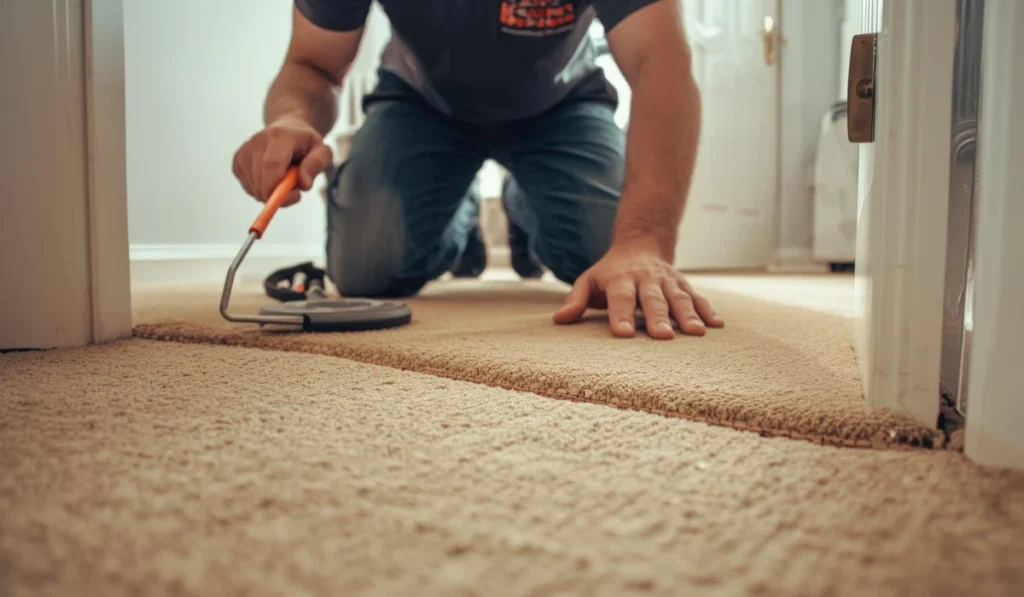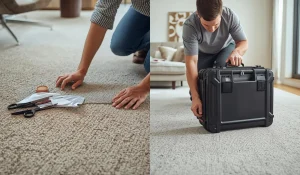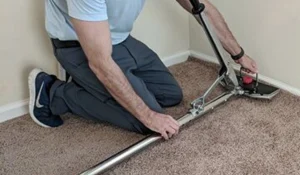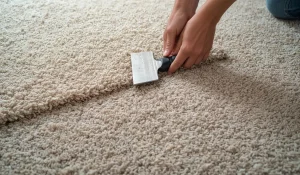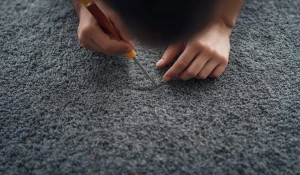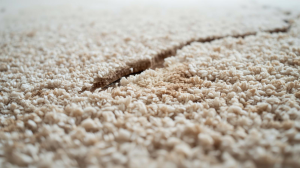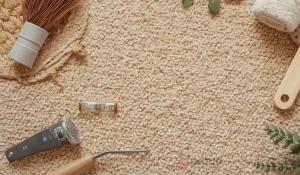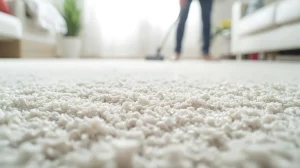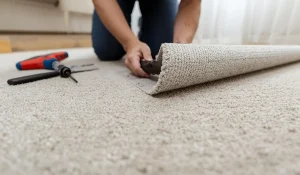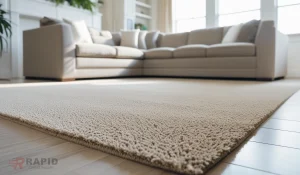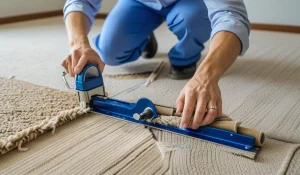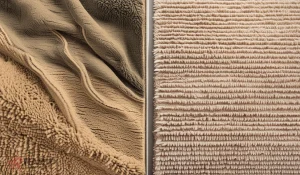Doorways cop more wear than any other part of the floor, so it is no surprise they are the first to show fraying and splitting. Whether you need to fix carpet torn at doorway thresholds or strengthen weak seams, this guide walks through causes, repair methods, and prevention tips that suit Australian homes.
Common Causes of Tears at Doorways
Before getting into carpet seam repair, it helps to understand why doorways fail. The reasons are often straightforward but can quickly get worse if ignored.
- Heavy foot traffic dragging shoes, prams, or bags across the edge.
- Vacuum heads catching loose fibres at the transition.
- Pets scratching or chewing at seams.
- Inadequate seam sealer or gripper at installation.
- Moisture near bathrooms or laundries softening the backing.
- Subfloor height differences putting stress on the carpet edge.
When left untreated, small splits can become large patches of doorway carpet damage that compromise safety and appearance.
Quick Diagnosis at a Glance
If you are wondering whether to repair carpet transitions yourself or call a pro, a quick look at the damage tells you a lot:
- Minor fray on the edge: trim and seal
- Edge pulled away from gripper: re-stretch and tuck
- Visible split seam: hot-melt tape and roller
- Missing or bent transition strip: replace and reset
- Chewed patch: square cut and patch insert
Catching issues early keeps a small carpet tear repair job from becoming a full replacement. For deeper damage, you may need a carpet patch with invisible seams to restore the look perfectly.
Tools and Materials You’ll Need
Starting a DIY doorway carpet damage repair project is easier when you have the right gear at hand. Basic items include:
- Sharp utility knife and heavy-duty scissors
- Knee kicker or small stretcher
- Seam roller and heat-bond seam tape
- Double-sided tape for temporary fixes
- Carpet seam sealer
- Replacement transition strips
- PPE such as gloves and knee pads
In Australia, best practice is sealing all cut edges during both installation and repair to stop fibres unravelling further — a step also recommended when you patch a hole in the carpet.
DIY Methods by Damage Type
Each type of damage needs its own fix. With patience, you can often fix carpet torn at doorway thresholds without needing to replace an entire room.
Edge Fraying at a Hard-Floor Transition
- Trim away loose fibres neatly
- Apply seam sealer along the cut edge
- Let it dry fully
- Re-tuck into gripper or reinstall the strip
This prevents the fray from spreading and keeps the threshold tidy — similar to how professionals handle carpet burn repair for localised damage.
Carpet Pulled Away from the Gripper
- Carefully lift the strip to avoid damaging timber or tile
- Use a knee kicker to re-tension the carpet
- Hook it back onto the gripper teeth
- Trim excess before closing the transition
Re-tensioning ensures the edge stays snug and safe.
Split or Weak Doorway Seam
If the seam itself has failed, carpet seam repair is essential.
- Open up the edges and insert heat-bond tape underneath
- Activate with a seaming iron and roll firmly
- Apply seam sealer along the cut edges
- Allow to cool under weight before stretching back
A sealed, bonded seam lasts much longer under daily traffic.
Pet Damage or Chewed Sections
When a section is missing, carpet tear repair with a patch works best.
- Square the damaged area with straight edges
- Cut a donor piece from leftover carpet, match pile direction
- Fix with tape or heat-bond, then roll flat
- Blend the fibres with scissors or a brush
If you don’t have spare offcuts, check if the carpet continues into a wardrobe where you can discreetly cut a patch.
Replacing or Upgrading Transition Strips
It is often better to fully repair carpet transitions than to keep patching weak strips. Choose the right type for the flooring materials:
- Edge grippers for carpet-to-tile
- T-moulds for carpet-to-timber
- Reducers for height differences
- 4-in-1 systems for versatile finishes
A secure transition not only hides raw edges but also removes a tripping hazard.
Reinforcing Seams for Longevity
Even after doorway carpet damage is fixed, you want the repair to last. Professional installers rely on techniques that add years to a seam:
- Apply seam sealer to every cut edge
- Keep tension consistent with a knee kicker or stretcher
- Roll hot seams to set fibres properly
- Use the right trim for the flooring height difference
These details make the difference between a short-term fix and a permanent solution. For a detailed approach on maintaining strong joins, see our guide on how to repair carpet burns and stains.
Australia-Specific Standards and Site Conditions
While DIY repairs are practical, knowing local standards matters. For example, AS 2455.1 sets guidelines for installation and carpet seam repair in Australian homes. It covers seam sealing, stretching, and correct handling of transitions.
Keeping humidity stable indoors also matters, since extreme dry or damp conditions can cause the backing to shift and seams to loosen.
Safety and Clean-Work Tips
Even simple carpet tear repair work involves sharp blades and adhesives. Stay safe with a few practical habits:
- Wear gloves and eye protection
- Work in a ventilated space when using adhesives
- Protect nearby tiles or timber with tape before prying
- Use fresh blades to avoid tearing fibres further
- Vacuum loose tufts after trimming
A careful, clean approach prevents accidental damage while making the repair look professional.
Prevention Tips to Stop Future Damage
Once you fix carpet torn at doorway areas, prevention is key to avoiding repeat work. Simple habits can keep seams neat for years:
- Always seal cut edges during install or repair
- Use the right transition strip at every material change
- Avoid vacuum heads with rotating brushes near thresholds
- Provide pets with scratching posts away from doorways
- Use reducers to manage subfloor height differences
Prevention saves both time and money in the long run. Learn how to maintain a clean, damage-free surface with our tips on how to get burn marks out of carpet — great for keeping your flooring flawless long term.
When to Call a Professional?
DIY works well for small jobs, but not all repair carpet transitions tasks are simple. Call a pro if:
- The carpet has delaminated near wet areas
- Seams are splitting wide across a doorway
- Complex patterns or Berber weaves need matching
- DIY attempts haven’t held up
Professional tools like power stretchers and seam irons can restore the carpet to near-new condition.
Cost and Time Snapshot
For minor doorway carpet damage, DIY supplies are affordable and repairs can take under two hours. Hiring a professional varies depending on the scope but is usually far cheaper than replacing an entire carpeted room. When damage keeps recurring, professional intervention is a cost-effective way to ensure durability.
Summary
Doorways take a beating, and when the carpet tears it can quickly become both unsafe and unsightly. With the right approach, you can fix carpet torn at doorway areas and keep your flooring looking neat for years. Still, some jobs are best left to the experts.
Rapid Carpet Repairs has the tools, experience, and know-how to handle everything from small frays to serious seam damage. Our goal is simple: restore your carpet so it feels brand new without the cost of replacement.
If your carpet is looking worse for wear, don’t wait until the problem grows. Call Rapid Carpet Repairs today on 0480022382 and let us make your floors safe, fresh, and flawless again.
